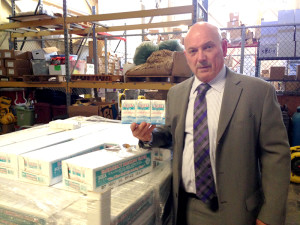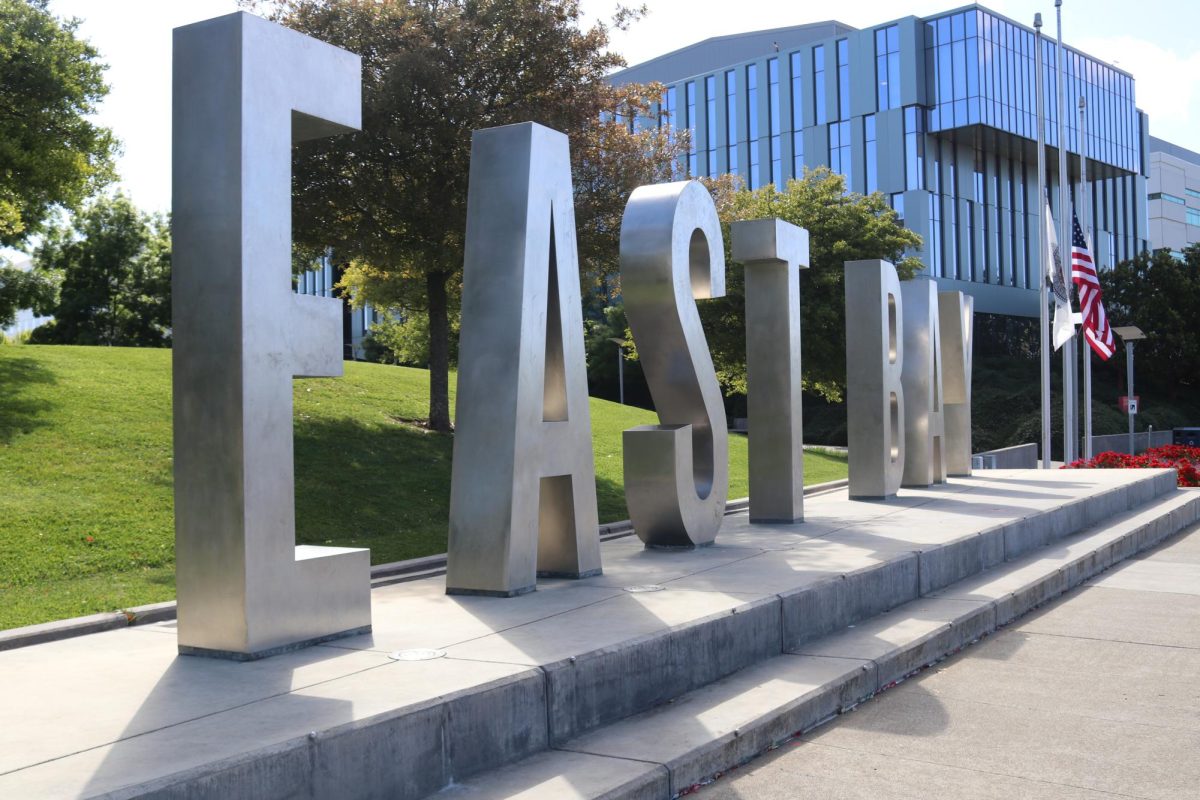
room.
The ground is shaking; classmates look at each other. A second jolt is rumbling, shaking hard. Loose items, like projectiles, fly off the desktops. The instructor calls: drop, cover and hold on. The lights go out and after the longest minute, the shaking stops.
There is ceiling rubble in the hall. Everyone is scrambling for cell phones. Fortunately you are alive. What is the next step?
In the event of an earthquake it is Dr. Leroy Morishita’s duty, as university president, to determine whether the disaster is severe enough to announce a state of emergency for CSU East Bay’s 13,160 students on campus.
Once announced, the Emergency Operations Committee is activated and university administrators will follow guidelines from the Emergency Operations Plan.
“We have spent over the past couple years approximately $300,000 preparing for a variety of emergencies the campus may face, including earthquakes,” said Vice-President of Administration and Finance Bradley Wells. “These costs include establishing and equipping the emergency operations center, development of communication systems including AlertMe, training and planning,” he added in an interview with The Pioneer.
Wells would become emergency operations executive, according to the EOP and would work alongside the president; who would have the highest authority as emergency policy executive.
AlertMe is the major way for students to stay informed during an emergency.
“We just did incredible updates to that system. I got together with the vice-president, Brad Wells, we reviewed it and he supported some dramatic changes to it to make it more comprehensive,” said James Hodges, recently appointed commander of emergency operations and former chief of police.
CSUEB sits on a hill some 1.9 miles from the Hayward Fault. Since 1970, seismologists have recorded 39 earthquakes between magnitude 3.0 and 4.0 on the Hayward Fault. None were followed by a larger quake, USGS seismologist David Oppenheimer, said in comments to the San Francisco Chronicle when the latest 3.5 trembler occurred in late December 2006. Experts estimate there is a 27 percent probability of a 6.7 or greater earthquake on the Hayward Fault by 2031.
CSUEB is located on bedrock; making the campus fairly earthquake safe, said Hodges. The exception, he noted in an interview, is Warren Hall, the former administration building, slated for demolition this summer after the CSU Seismic Review Board declared it seismically unsafe in the event of an earthquake.
Although the university is planning to provide food and shelter for students stranded on campus, the college website urges students to be prepared by keeping at least two days worth of emergency supplies in their cars.
Hodges escorted a reporter to a huge warehouse near the science building where some of the provisions are kept for an emergency.
“Some of the supplies we keep over in a locked area facilities, most of those are containerized water, water’s important, we have to have one gallon of water per person per day,” Hodges said. “So we have plenty of water supplies… and we have energy bars, meals-ready-to-eat, MRE’s it’s a military type of thing.”
“We [would] look at what Aramark has, [and] the dining commons… it’s hard to calculate how many days for how many people, we try to figure about 10,000 to 14,000 thousand people for a couple days at least,” he explained.
In the event of a water shortage, he said swimming pool water would be available and if roads are damaged helicopters would visit campus with medical, food or water supplies in boxes.
The Red Cross will come and provide aid to students and whoever is acting as incident commander will have to make a call in order to receive tents for people who cannot go back home, Hodges said.
Meanwhile, bedding would be available at the basketball gym Hodges said, Aramark, the dining and catering service staff, would be handing out the food in storage.
Students should still remain prepared to fend for themselves; the EOP specifies “Students who commute to campus by car should keep in the car enough supplies to sustain themselves for at least 72 hours.”
“I don’t even have a car, I take BART here. I can’t walk around with supplies that will last me for three days,” said James Latief, a CSUEB student who like many, considered the request far-fetched.
The university may host some of the neighboring residents who could seek refuge on campus, he said. According to the U.S. Census Bureau, as of 2010 there are 144,186 people in Hayward.
Picture students alongside Hayward residents in long lines for water and food, it will not be gourmet cuisine but it is safe to eat.
If it should happen Hayward Police, Alameda County, California Emergency Management Agency and FEMA may get involved depending on the severity of the natural disaster.
The Emergency Operation Plan includes the chief of police as Incident Commander. Lt. Sheryl Boykins, formerly of the Hayward Police Department, will act in that role as she is CSUEB’s new chief of university police. “I’ll be working hand in hand with the new chief,” said Hodges.
Organizing and assigning roles in an emergency is based on who is available on the spot. Hodges said he could support the new chief or fill in as Incident Commander. The Incident Commander would appoint a Public Information Officer who would inform students, faculty, staff and the public of developments.
The emergency leadership will be in charge of unit leaders tasked with communications, supply, food, shelter, medical, and transportation units according to the EOP.
















